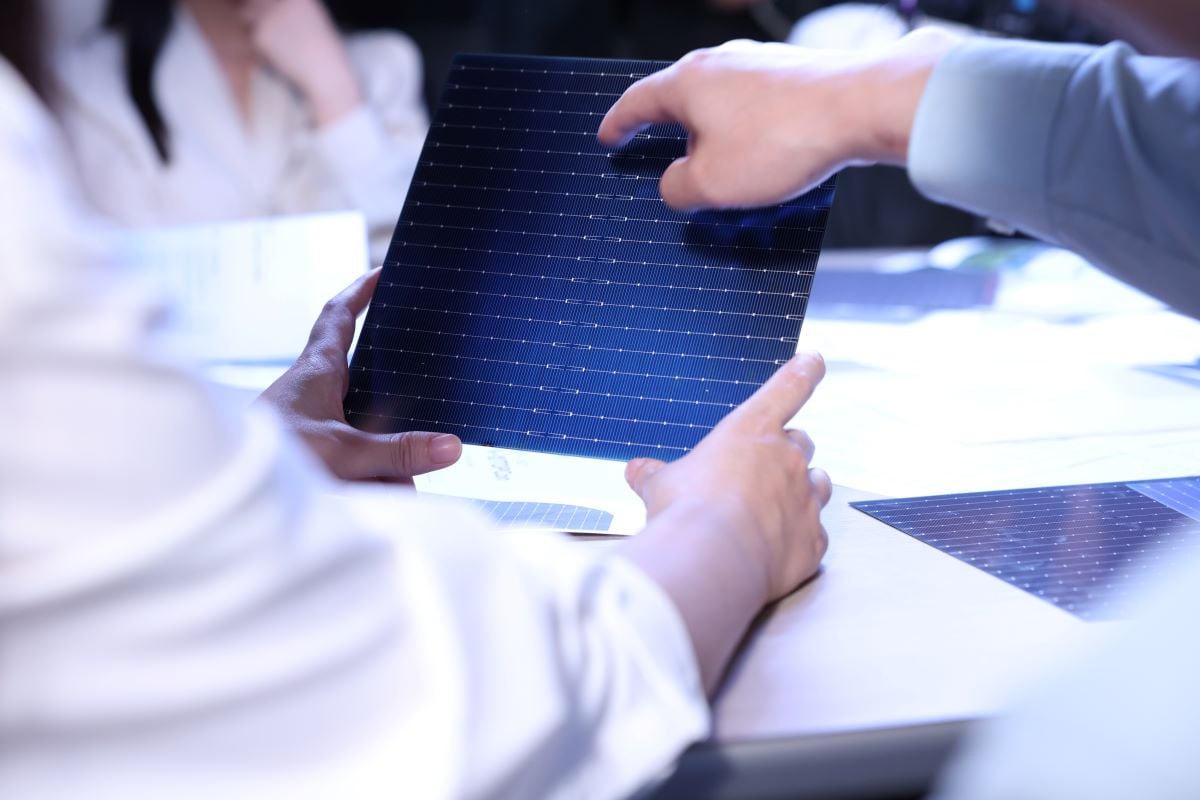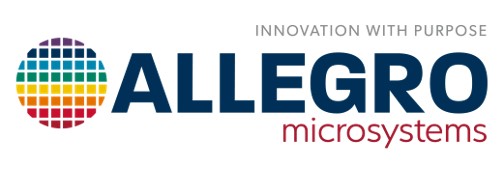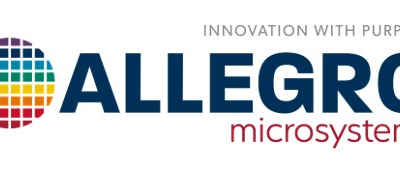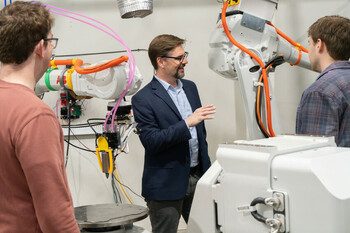Tech News
From PERC to TOPCon: Navigating the evolution of solar technology – PV Tech

The solar industry is undergoing a monumental shift, rapidly moving away from passivated emitter and rear contact (PERC) technology to tunnel oxide passivated contact (TOPCon) technology.
The advantages of TOPCon are clear: higher efficiency, improved energy yield, and significantly lower levelised cost of energy (LCOE) from reduced cabling, land, trackers and labour costs.
TOPCon technology improves passivation paths, minimising electron recombination (or losses) to enhance energy conversion. This advancement results in efficiencies of 22.3-22.8% and growing, allowing more modules to fit per square kilometre. TOPCon also exhibits a superior bifaciality factor of 80%, compared to PERC’s 70%, boosting the amount of energy produced by the back of the module relative to the front side. Finally, TOPCon has a better temperature coefficient than PERC, which results in higher production in hot conditions.
In total, TOPCon has a 1-2% advantage in energy yield, depending on location, which can add multi-millions in annual revenue for large-scale solar plants.
Currently, TOPCon is more cost-effective than other n-type technologies, such as heterojunction (HJT), which require substantially different and more advanced manufacturing processes. In contrast, the TOPCon ecosystem offers a broader array of equipment options and technology pathways, making it easier and more compatible for converting production lines from PERC, requiring only a few extra pieces of equipment and layout space.
TOPCon and PERC warranties state similar annual degradation rates of around 0.4%. However, TOPCon has a lower first-year degradation of 1% versus PERC’s 2%.
The transition to TOPCon is happening so fast that PERC will be history in a few years.
According to Clean Energy Associate’s (CEA) latest market intelligence, TOPCon is expected to represent half of global capacity by the end of this year, with PERC capacity dwindling to less than 25% and being completely phased out by 2028. While the US market may slightly lag behind due to limited domestic supply, TOPCon is gaining traction globally, with manufacturers ramping up production to meet soaring demand.
As with any fast-changing technology landscape, there are learning curves. Higher defect rates are typical with any new production line. Suppliers may also face delays in reaching promised efficiency and reliability targets as they refine their processes.
PERC’s extensive global track record may lead more risk-averse developers to shy away from TOPCon for a period of time until more data is made available. Likewise, some financiers might also be cautiously waiting to see how TOPCon materialises. Nonetheless, they cannot afford to delay indefinitely, as the transition is already well underway.
The introduction of TOPCon has added one more variable to the supply chain contracting process, making it even more complicated in the short term. Customers are left wondering how to navigate long-term supply agreements over the next few years.
Price remains a critical factor in module procurement strategy. As PERC modules are being phased out, manufacturers are slashing prices to make room for TOPCon. PERC prices are not as low in the US as in other regions, with recent RFPs resulting in TOPCon prices at a US$0.03 delta to PERC per watt. Developers must carefully decide if saving a few cents is worth the sacrifice in energy yield, considering long-term profitability and the extended warranty available with TOPCon.
While TOPCon is getting very close to being beneficial in almost every instance, it’s not quite there yet. Developers need to evaluate on a project-by-project basis whether it makes cost-sense to use TOPCon or PERC.
Additionally, module reliability and quality are paramount, with third-party qualification testing recommended to verify performance claims with real-time data and actual production statistics.
In our work at CEA, we counsel developers to never buy a product without having seen third-party qualification testing and verification. To ensure TOPCon modules meet the manufacturer’s performance and reliability claims, third-party audits, production monitoring and random testing should be conducted together with accelerated tests in climatic chambers that simulate decades in the field.
Customers considering multi-year supply agreements should prioritise suppliers with the capital and flexibility to ramp up TOPCon production as needed, as well as years of experience and R&D power. Also, suppliers with both PERC and TOPCon lines allow for greater flexibility in procurement strategies.
Additionally, developers must emphasise quality and reliability, as some manufacturers may be cutting corners to rapidly meet demand.
Regarding the choice of contract length, it is completely customer-specific and depends on their individual needs, risk tolerance and financier party. Typically, companies seeking long-term agreements are specifically focused on capturing the US domestic content adder. Others may only be interested in short-term contracts on a project-by-project basis and are negotiating new master service agreements for every project.
Some customers will only procure from Tier 1 suppliers because of their confidence levels to transition to the new technology much more quickly and are willing to pay a premium for that peace of mind. However, there are others who may be willing to take a chance with Tier 2 manufacturers for a price discount and potentially an Inflation Reduction Act (IRA) domestic content play.
Only the larger Tier 2s that can differentiate themselves and show additional value by de-risking their supply chain with the Uyghur Forced Labor Prevention Act (UFLPA) can compete before the big players start dominating again.
By prioritising robust quality assurance programmes, reliability and flexibility in procurement strategies, solar developers can navigate the transition from PERC to TOPCon with confidence.
Interested in learning more about trends in energy storage procurement? Check out CEA’s article on our sister site Energy-Storage.News.
George Touloupas is senior director of technology and quality for Clean Energy Associates, leading expert teams spanning quality assurance, market intelligence, supply chain management, manufacturing services and engineering services for solar PV, energy storage and green hydrogen. Brian Hansen is CEA’s director of supply chain, providing world-class expertise and guidance on global procurement contracts and sourcing strategies for over US$500 million in utility-scale solar projects.
Tech News
Exploring Startup Opportunities In Alternative Fuel Technology – Forbes

In this article, we explore four startup opportunities in alternative fuel technology, ranging from … [+]
In the context of the ever-growing energy consumption demands of our global civilization, especially bearing in mind the rising living standards in some of the most populous areas in Asia and Africa, combined with the environmental impact of the energy sector, innovations in energy and fuel technology are likely some of the most important and impactful technological developments to look forward to in the coming decades.
With this in mind, if you are a startup founder looking to change the world for the better alternative fuel technology is a promising field to focus your energy on. Startups at the forefront of this movement have the opportunity to revolutionize the transportation sector and accelerate the transition to a sustainable future. Моreover, because of the environmental impact of such technologies finding funding for your startup could be easier because of the availability of public funding for green technologies in a generally favorable regulatory environment.
In this article, we’ll explore four startup opportunities in alternative fuel technology, ranging from electric vehicle charging infrastructure to biofuels, highlighting their potential for innovation and market disruption.
Electric vehicles (EVs) are becoming increasingly popular as consumers and governments prioritize cleaner transportation options. However, the widespread adoption of EVs hinges on the availability of reliable and convenient charging infrastructure.
Startups in this space can focus on developing innovative solutions such as fast-charging stations, wireless charging technology, and smart grid integration. For example, companies like ChargePoint and EVgo are pioneering the development of EV charging networks across the globe, catering to the growing demand for electric mobility.
The opportunity for startups lies in addressing key challenges such as scalability, interoperability, and user experience. By leveraging advanced technologies and strategic partnerships, startups can play a vital role in expanding EV charging infrastructure and accelerating the adoption of electric vehicles.
Battery technology is a critical component of alternative fuel technology, enabling energy storage for electric vehicles, renewable energy systems, and portable electronics. In fact, energy storage technology is becoming a choke-point for most of the mass adoption and practical feasibility of a lot of EV and alternative energy solutions.
Startups in this space can focus on developing advanced battery chemistries, materials, and manufacturing processes to improve performance, safety, and cost-effectiveness. For example, companies like Tesla and Panasonic are leading the charge in lithium-ion battery production, driving down costs and improving energy density.
The demand for high-performance batteries is expected to surge as electric vehicles and renewable energy installations continue to grow. Startups that can innovate in areas such as solid-state batteries, silicon-anode technology, and battery recycling have the potential to disrupt the market and capture significant market share. Moreover, advancements in battery technology can unlock new applications such as grid-scale energy storage and electric aviation, further expanding the market opportunity for startups.
Hydrogen fuel cells offer a promising alternative to traditional combustion engines, providing zero-emission power for various applications, including vehicles, drones, and stationary power systems. Startups in this space can focus on developing innovative solutions for hydrogen production, storage, distribution, and fuel cell technology.
For example, companies like Ballard Power Systems and Plug Power are leading the commercialization of hydrogen fuel cell technology for transportation and industrial applications.
The scalability and versatility of hydrogen fuel cells present a compelling opportunity for startups to drive innovation and market penetration. By overcoming technical challenges such as cost, efficiency, and infrastructure, startups can position themselves as key players in a possible transition to a hydrogen-based economy. Additionally, government incentives and industry partnerships can provide critical support for startups seeking to capitalize on the growing demand for clean energy solutions.
Biofuels offer a renewable alternative to conventional fossil fuels, derived from organic sources such as biomass, algae, waste materials, or agricultural residues. Startups in this space can focus on developing sustainable biofuel production processes that minimize environmental impact and maximize energy efficiency.
For example, companies like Renewable Energy Group and Gevo are leveraging advanced biotechnology and feedstock optimization to produce low-carbon biofuels for transportation and heating applications among others.
The abundance of organic feedstocks and the potential for carbon neutrality make biofuels an attractive option for reducing greenhouse gas emissions and mitigating climate change. Startups that can innovate in biofuel production, distribution, and certification have the opportunity to disrupt traditional energy markets and drive the transition to a more sustainable energy future. Additionally, government mandates and corporate sustainability initiatives create a favorable regulatory environment for biofuel startups to thrive.
Tech News
GHSP Leverages Allegro MicroSystems' Technology to Shift – GlobeNewswire

| Source: Allegro MicroSystems, Inc.
MANCHESTER, N.H., April 30, 2024 (GLOBE NEWSWIRE) — Allegro MicroSystems, Inc. (“Allegro”) (Nasdaq: ALGM) a global leader in power and sensing semiconductor technology for motion control and energy efficient-system is pleased to announce, that GHSP, a global provider of mechanical and electromechanical systems and portfolio company of JSJ Corporation, is closely collaborating with and has adopted Allegro’s best-in-class gate driver and vehicle sensor technology for its new eVibe vibration enhancement system.
In the rapidly evolving world of xEV technology, there is a new class of xEV enthusiasts who crave a more immersive motoring experience. GHSP’s eVibe system transforms xEV driving by providing drivers with the noise and vibrations that mimic the familiar feel and sounds of a traditional internal combustion engine. At the heart of this next-level technology, is Allegro’s A89500 motor driver and APS12215 Hall-effect latch, which provide best-in-class performance and switching capabilities.
“From the beginning, our challenge has always been to create a solution that would address a unique and growing xEV market segment,” said Dan Dawiedczyk, President of GHSP. “We are excited to collaborate and combine our industry experience and expertise, to help bring our vision to life. Together, Allegro and GHSP are developing groundbreaking innovations. We look forward to a winning partnership for many years to come.”
Helping to elevate the end product, Allegro’s A89500 motor driver allows for high power density and fast switching to help provide instant response and feel. Its transient robustness and wide input voltage range make it a standout solution in the market. The APS12215 Hall-effect latch, on the other hand, provides high-temperature performance and stable switching capabilities, enabling the eVibe system to precisely track and monitor the position of the motors’ unbalanced weights, ultimately leading to a more realistic vibration experience. The eVibe technology allows several applications including ADAS, ICE emulation, or high performance.
“For more than a decade, Allegro has worked closely with market-leading automotive partners to develop innovative solutions that help shift the future of driving, power and performance in electric vehicles,” said Suman Narayan, Allegro’s Senior Vice President, Products. “Our latest collaboration highlights a new, growing market segment and demand for Allegro’s technology. We value GHSP’s automotive expertise and look forward to our continued partnership as we develop solutions that drive innovation.”
The impact of eVibe extends beyond just the driving experience. It represents a shift towards the future of xEV technology and the way owners engage with their vehicles. From mimicking an idle feel to simulated engine throttle and high-speed gear shifts via premium vibration indicators, GHSP’s technology is providing drivers with a more immersive and connected drive. This innovation has the potential to reshape the xEV market, catering to a wider range of custom options and individual customer preferences, while also helping to further the adoption of electric vehicles.
On Thursday, May 2, GHSP and Allegro will host a virtual round table discussing “The Evolution of eVibe with GHSP and Allegro MicroSystems.” To learn more and register for this event please visit: https://allegromicro.com/en/applications/automotive
For more information about the eVibe system please visit: https://www.ghsp.com/evibe
About Allegro MicroSystems
Allegro MicroSystems, Inc. is a leading global designer, developer, fabless manufacturer and marketer of sensor integrated circuits (“ICs”) and application-specific analog power ICs enabling emerging technologies in the automotive and industrial markets. Allegro’s diverse product portfolio provides efficient and reliable solutions for the electrification of vehicles, automotive ADAS safety features, automation for Industry 4.0 and power-saving technologies for data centers and clean energy applications. For additional information, please visit https://www.allegromicro.com/en/.
About GHSP
GHSP is a privately owned company based in Grand Haven, Mich., that specializes in the design and manufacturing of innovative control systems and technology solutions primarily for the automobile and high-end appliance industries. Founded in 1924, GHSP has locations in North America, Europe and Asia. GHSP is a portfolio business within JSJ Corporation, a growth firm with global manufacturing, distribution and service businesses that focus on highly technical skills to deliver engineered solutions. Learn more at GHSP.com and JSJcorp.com.
Allegro Contact:
Laura Kozikowski
Sr. Director of Global Marketing and Corporate Communications
[email protected]
GHSP Contact:
Liz Hoffswell
Marketing & Communication Leader
[email protected]
Tech News
BAE Systems' electric drive technology to power GILLIG's new hydrogen fuel cell transit buses for zero-emission … – BAE Systems
-

 General Knowledge2 years ago
General Knowledge2 years agoList of Indian States and Capital
-

 General Knowledge2 years ago
General Knowledge2 years agoList Of 400 Famous Books and Authors
-

 Important Days4 years ago
Important Days4 years agoImportant Days of Each Month
-

 General Knowledge2 years ago
General Knowledge2 years agoCountries and their National Sports
-

 General Knowledge3 years ago
General Knowledge3 years agoCountry Capital and Currency
-

 Important Days3 years ago
Important Days3 years agoHoli
-

 General Knowledge2 years ago
General Knowledge2 years agoList of Indian President
-

 General Knowledge2 years ago
General Knowledge2 years agoList of Indian Vice President













